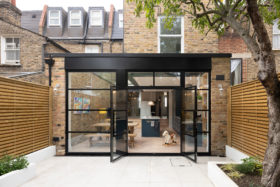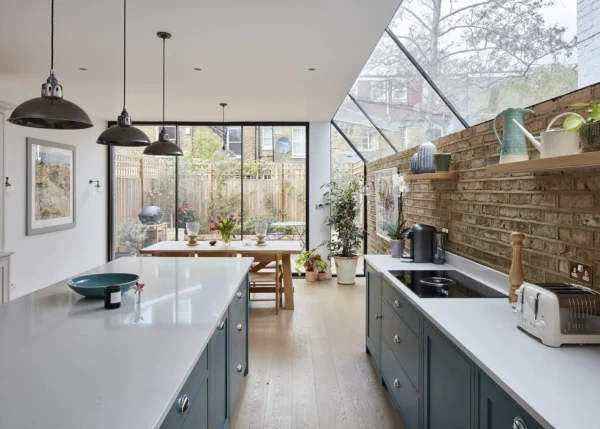What Are Prime Costs and Provisional Sums?
From planning through to completion, as you move forward on the path to your self build home, you’re sure to encounter all sorts of construction jargon. Two such terms are ‘prime costs’ and the closely related ‘provisional sums’ – phrases you’re likely to run into when you start to call in quotes from builders.
A prime cost is the total of all the direct costs associated with a particular construction activity. So, if a builder calls in a specialist sub-contractor to carry out some work, such as re-rendering an external wall, the prime cost would be the sub-contractor’s invoice to that builder for the labour, the materials and plant provided. But if the builder carries out the work using their own labour, then the prime cost would be worked out differently: the proportionate costs for their direct labour plus any scaffold required, the use of a mixer and the delivered cost of the raw materials.
These are ‘true’ prime costs, and don’t allow for any contractor back-office expenditure or any profit for processing the work. In practice, however, you’ll probably encounter the term in a slightly different context on your home building project: namely as informed (to a greater or lesser extent) estimates for some parts of the work.
Prime costs vs provisional sums
When a project’s specification is first being drawn up, there might not be sufficient details from the architect or client for a surveyor or builder to fully flesh out what’s required. This makes it difficult to accurately quote for a job, as they can’t be expected to give a fixed price when the brief is still vague. In these situations, they will allocate a cost to be included: either as prime cost sum (PC sum) or a provisional sum (PS). But what’s the difference between the two?
The Royal Institution of Chartered Surveyors (RICS) provides subtle advice on the matter as part of a glossary included in its cost reporting guidance. It says a prime cost sum is used for “the quantities of work whose extent is known, but whose specification has yet to be determined.”
A good example would be windows and external doors, where you know the physical number required but the type, quality level and manufacturer is yet to be decided. The contractor will be expecting to procure the final window selection once agreed, but will also expect to apply their overheads and profit to the eventual prime cost invoice from the supplier.
The RICS gives two categories for provisional sums – defined and undefined. Where a PS is defined, the sum provided is for work not completely designed but where the following information is known: “the nature and construction of the work, a statement of how and where the work will be fixed to the building and what other work may be fixed to it, quantities that indicate the scope and extent of the work and, finally, any specific and identified limitations.”
QUICK GUIDE: Controlloing project costsThe more information you can secure as part of your tender exercise, the easier it will be to control costs. It’s rare for professional quantity surveyors to be used on a self build, but applying some of their processes will allow you to get more oversight on how and where your money is being spent. Nobody likes to be ripped off, as it can leave a nasty memory in what should be an enjoyable process, so it’s important to protect yourself. Variations come thick and fast, and are an inevitable part of any building project, but this is where the greatest risk lies. Putting processes in place to manage them will help with both your stress levels and negotiations. Prime costs and agreeing OH&P markups and fair daywork rates are among the tools you can use ensure transparent pricing. Unscrupulous contractors won’t necessarily like them, but a good, solid and professional firm will recognise that this ends up being perfectly fair to both sides. |
So, an example of a defined provisional sum might be a conservatory that’s outlined on the planning drawings to show its scope, along with notes indicating brick plinth walls, foundations and a floor slab – but precious little else. In this case, the client will expect the contractor to have included an allowance for appropriate programming, planning and pricing in their quote. Therefore, once the contractor has received the missing specification details, there must be an opportunity for them to revise their provisional sum accordingly. You should then only instruct them to proceed with the works once the final figure has been agreed.
Undefined provisional sums are used where the detail just isn’t known. For instance, a nominal figure of £30,000 might be allocated to a detached garage so the overall budget can at least reference a desirable, but less immediate, part of the project. In this scenario, you can’t expect the contractor to have identified specific procurement costs. So, if you instruct them to do the work, it will need to be priced up from scratch.
Why prime costs & provisional sums are important
Sending a set of building control drawings to a contractor and asking for a price is a recipe for disaster. Instead, a client should carefully prepare (either themselves or using their professional team) a detailed specification and schedule of works to accompany the plans.
Nobody, however, will know the full extent of their project’s specification at the time of appointing contractors. So, where gaps exist, prime costs and provisional sums should be inserted.
The skill is in allocating the right amount of money, so that when the project budget is aggregated, a realistic figure will be arrived at. If the total cost is too high, then this is the stage to start your value engineering (and absolutely not once work has started, as this will lead to price hikes).
You should also agree at tender (quote) stage what mechanism will be used to calculate overheads and profit (OH&P) from the main contractor on any prime cost sums or project variations. Typically, this will amount to an uplift in the prime cost of somewhere between 10% and 20%.
Valuing prime costs sums
When drawing up a PC sum, the surveyor or contractor will draw on experience and known rates to try to generate a reasonably accurate quote. Let’s return to our window example here. In this case, the eventual cost will largely come down to the invoice from the supplier/manufacturer.
For our purposes, we’ll assume the client wants off-the-shelf, double-glazed factory painted timber windows and that there will be 10 of these. A sensible and fair way to control costs while keeping options open for the client would be for the tender documents to include a prime cost sum. If the windows are supplied at £400 each, then you might be quoted a total of £4,500 including an allowance of £500 for the contractor’s OH&P.
Say the client ultimately goes on to specify composite windows instead, at a cost closer to £600 each. In this case, the eventual supplier invoice to the contractor for the 10 units would be £6,000. They would reasonably expect to recover this, plus their OH&P, from the client using the agreed percentage uplift negotiated at the tender stage.
Closer look: Contractor markups & labour costsOverheads & profitOH&P is often calculated by taking a building company’s turnover and dividing it by their annual fixed costs for running their back office, contract management etc. A typical small-to-medium main contractor might turnover £600,000-£800,000 per year and carry fixed office costs of, say, £75,000. At that level, the overhead percentage could justifiably be around 10%. Labour costsThere are two RICS-approved ways to value labour. Option A involves taking annualised tradesperson salaries and allowing for holidays, benefits, pensions, national insurance, training obligations etc, and then applying a transparent markup.Option B, is more straightforward: the contractor can indicate all-in-rates for the various different trades to cover all of the above, as well as their overheads and profit. Ideally the rates would be provided on an hourly basis so, when you ask for some additional work to be carried out, the discussion can focus on the time involved for specific trade skills rather than trying to calculate an overall cost. When administered properly, this is fair and reasonable for both client and contractor. |
A different example might be why there’s a prime cost sum for creating a veranda and balustrade to be completed by the contractor’s own carpenters, but the exact spec of decking and spindles has not yet been finally agreed.
The valuation of this PC sum would be based on the supplier invoice for the materials, the appropriate OH&P percentage markup and the addition of labour using the all-in-rates (see box, above) for the amount of time the work takes – with no further OH&P markup. This total cost would then be substituted into the contract instead of the original PC sum. Simples!



































































































 Login/register to save Article for later
Login/register to save Article for later











